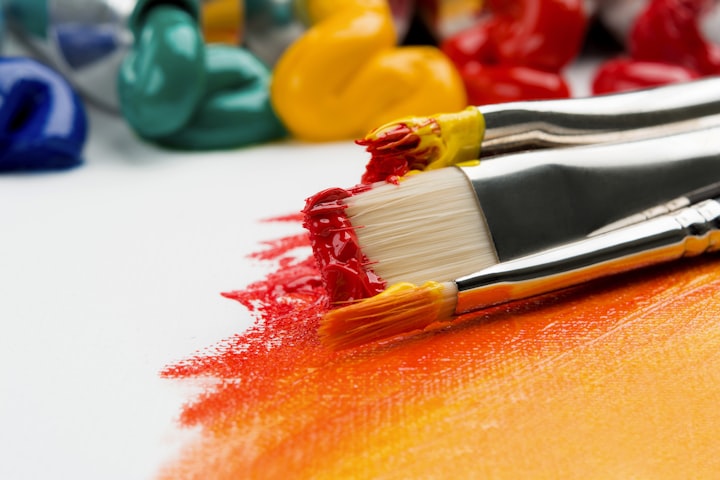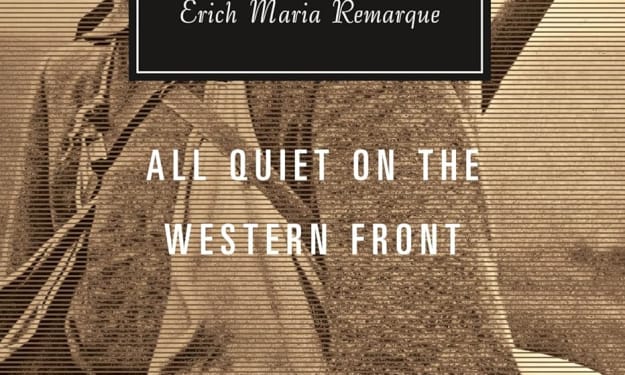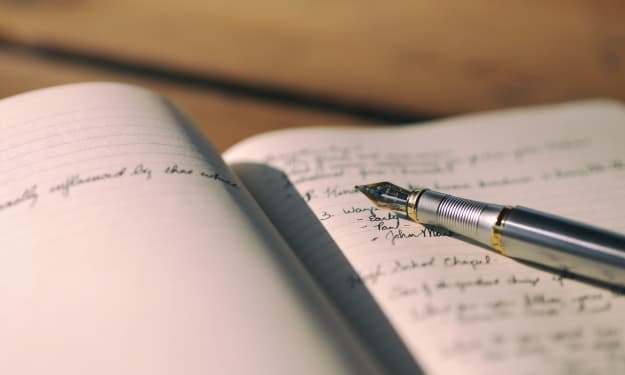art tips for every artist.
things I've learnt through my own art journey; tips to help with the art process.

I've seen hundreds of art tips or art hacks online, some of which work, some of which don't. This list isn't a collection of what I've seen online rather tips and tricks and hacks I've gathered up along my art journey. I've been drawing seriously since 2015, so if I may blow my own trumpet, I can give you some tips that are sure to work.
1. Kneadable Eraser for Textured Paper (the not-so fair-weather friend)
This nifty little thing will be your bestfriend who doesn't leave your side anytime you make a mistake. But that goes for all kinds of erasers.
Why kneadable erasers in specific?
If you're working on watercolour paper, or any other textured paper for that matter you'd know how difficult it is to erase and it alters the paper texture and smudges the graphite everywhere and it's not a pretty sight.
Sometimes I just want to lighten my lines and not get rid of it completely.
Come kneadable eraser to the rescue.
This thing doesn't mess with the paper texture or smudge pencil. It simply lifts off the graphite depending on how much pressure you apply.
2. Use poor-quality references
Now, it's subjective of course what's of good or bad quality, but let's stick to objective standards for now where the images you use as reference are blurry, not too crisp, but has enough lighting to detect shapes and structures and isn't HD-clear photography.
Why is this?
When you're working with something that's pro-quality your goal is already set to mimic that image whether you want to or not. It already has reached high aesthetic standards which bars your creativity for exploring and you end up being frustrated because you just can't seem to mimic the bloody image. (this is exactly how it goes down with me everytime I use a good quality image as reference).
So my lads, do yourself a favour and don't use pro photography as reference. Take your own snaps and draw from them. Plus that way you own the piece start to end - no crediting required.
3. Brush Settings
This is for my digital artists. I work on Photoshop, but this applies to literally any art software on this planet that lets you tweak brush settings.
Find your own combination that works for you, but always set the opacity and flow settings below 70.
Normally at 100% the lines you get with most brushes are thick. dark, flat coloured and bold. You can't achieve any of the pressure dynamics to mimic traditional media like this even if your pressures are on point.
Reducing the opacity/flow solves this issue as the thickness and boldness is controlled by the amount of pressure you put on your pen.
4. Paint in intervals (and come back with fresh eyes)
I'm guilty of trying to finish an artwork in one sitting and failing miserably and racking up a killer migraine afterwards. Don't be like me.
Everytime I spend over 7 hours in one sitting trying to finish an artwork I just give up on the 8th hour, come back the next day only to realise I royally screwed up somewhere. Maybe messed up with the layers or maybe painted the whole thing disproportionate and now there's no going back only to redo the whole thing.
Therefore, TAKE BREAKS!
With studying, psychologists say 20 minute intervals are the most efficient to retain the most amount of information. I say 20 minute intervals are the best to get the maximum productivity out of you. So, work for 20 minutes and take a 5-10 minute break to do something completely unrelated to art: grab a snack, text someone, watch a video, play with your kitten.
5. White noise (and other backgrounds)
Never, I repeat NEVER, work in complete silence. I don't know how it's even possible to conduct a kinesthetic task without auditory aids.
You know how when a call goes on for too long you start fiddling around with things near you to keep yourself occupied and your mind from wandering off to wonderland? It's the same and vice-versa. You need your brain to keep busy while you work - sounds counter-intuitive, but trust me.
I do a multitude of things depending on my mood. I'll listen to podcasts, creepypastas, stories, music and what have you.
Your mind will likely get extremely jaded and frustrate you and you won't be able to work upto your max potential so give it something to get lost into.
You'll enjoy the process more.
6. Use a variety of brushes.
This one's for my digital artists again, but applies to traditional mediums too.
Don't just stick with that one hard round brush only tweaking its settings. Use different sorts of brushes. Test different brushes there's thousands available online for free. Make yourself a swatch sheet, familiarise yourself with different brushes and incorporate them into your work. Most backgrounds look better with textured brushes rather than soft/hard brushes.
In the beginning I only stuck to 1 or 2 brushes myself and my work would look unappetisingly amateur. Then I started working with different textures which gives the art a more rendered feel.
My favourite are the chalky textured brushes. They have that raw feel to it that I've grown to love.
7. Use layers efficiently
I'll define what I mean by efficient first.
Don't use 20 layers
But don't use 2 layers either.
A layer count between 5 to 8 is more than enough for simple pieces. If you're working a Rembrandt piece then yes perhaps even 100 layers would not be enough but for everyday work you don't need tens of layers, it will only confuse and overwhelm you. Plus there'e higher probability of you working on the wrong layer every other minute, lengthening your work process.
8. Use layer effects.
You have the chance to use to use blend modes and "cheat" a little so why wouldn't you. Don't be an elitist and try to do what you'd do traditionally, digitally. They're different mediums for a reason and they have different learning structures for that reason.
I use the word cheat loosely, because you aren't cheating at all. You have the feature to make use of so make use of it.
It gives your otherwise possibly blander piece a more dynamic feel with more depth.
9. Canvas size matters.
Back to traditional. I realise most of my tips have been for digital art, because I've worked most digitally, and there's yet so much to discover about it as unlike traditional mediums it hasn't existed for aeons and is still fairly new. Anyway!
I can't even remember how many projects I've abandoned because the canvas size overwhelmed me and I just didn't know what to do with all this space. I literally felt like I was wasting space (dig intended) so I just never finished painting them. Before you go and invest those precious coins in buying a canvas think and plan your work and how much space you'd need for an appealing compositions. Don't buy a canvas bigger or smaller than you need. Map your thoughts out, make thumbnails.
Usually medium sized canvases work for anything. My favourite are squares because I mainly do abstract or portraits and never landscapes. But if you're doing landscapes, rectangles may work better for you.
This goes for digital art too!
Don't get too excited and start drawing on a resolution of 7200x5400.
That's just not going to work. Some brushes won't even function well with a resolution that high. Unless you're a pro artist and has a strong enough computer to handle that much internal processing, stay withing 3000x300 with a dpi of 180 (or along those lines).
10. Shapes
This is the most basic trick you'd ever hear but learn to see shapes.
Whatever reference you're looking at it will always be too complicated for the mind to process and recreate. Which is why we break down our visual senses into smaller more comprehensible information. In terms of drawing and painting we break down complex visuals into simpler shapes and use that as framework or base to start with. This also helps getting the proportions right.
11. Experiment with Colours
We all start of "shading" with a different shade of the same hue. For e.g. to add depth to the colouring of an apple we'll use a maroon for the deeper parts and a more pinkish tone for the lighter parts. Which in theory is perfectly fine. There's nothing wrong with that, infact that is the rule we're taught at first.
But to achieve that more crisp and pro looking feel you'll have to break some rules. Don't just stick to an analogous colour palette. Try other combos. To me, colouring an apple with the Triadic palette would look much, much more aesthetic especially if you're illustrating and not just painting.
Try various different combinations. Experiment. Learn Colour Theory, it will be the best leap in your art journey if you haven't already.
And please don't just use black and white to shade. That is sheer laziness and no one likes it.
Use a different colour, not a darker colour.
12. Last tip for now.
We all struggle with this everyday we flip the sketchbook open.
The empty page just glares at us just like that.
Draw a margin. Borders.
If nothing else is coming to your head, and you don't know what on bloody earth to draw, just draw 4 lines and give the page a border.
Once you's taken the lass's chastity, going in won't be as intimidating. You've already put your pen down on it. It's not a blank page anymore.
I'll finish by saying I'm not a pro artist. I'm not here to critique anyone's style or process, I'm just sharing things I've picked up along my journey.
About the Creator
Azreen Mahmood
i write
to make sense of what's wrong around me
to let my emotions find a place
to say there's another perspective, always
if you like what i have to say a small tip would be much appreciated,
thank you for taking the time and interest <3
Enjoyed the story? Support the Creator.
Subscribe for free to receive all their stories in your feed. You could also pledge your support or give them a one-off tip, letting them know you appreciate their work.






Comments
There are no comments for this story
Be the first to respond and start the conversation.